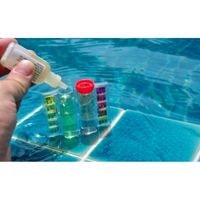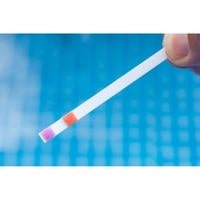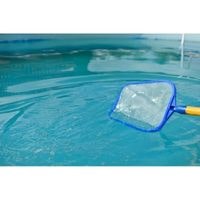How to remove copper from pool water. When swimming pools open in the summer, family members and guests may complain about their hair becoming green or their swimsuits turning green.
Chances are you are quick to blame the chlorine filling that makes up a large part of your pool water, but in reality, it is probably copper that has somehow entered the pool and is responsible for the undesirable coloring.
The more likely culprits, in this case, would be local geology and where your water is originating from.
Water that originates from close to home is more likely to have traces of minerals including copper which enters into your pool through natural germs as opposed to tap water which comes from a relatively clean source and should pose less risk for this type of problem.
How to remove copper from pool water

How to remove copper from pool water. Copper can enter your pool from several sources: copper pipes in your plumbing system, copper algaecide, or copper oxidizer.
The easiest way to remove copper from the water is by raising the pH level to about 7.8-8.0 and “locking” it in with a sequestering agent (e.g. soda ash).
Depending on the source of the copper, manually raising the pH first then adding compounds (such as soda ash) have been shown to reduce free metal ions levels below 0.01 ppm.
Copper test

Copper test strips and color charts are used to see if there is copper in the water.
First, dip the test strip into the pool water for five seconds. Then remove the strip from the water and shake once.
Wait for about 15 seconds before comparing the results on the strip with those of the chart that comes with your kit to see what level of copper there is. Ideally, there should be no copper present at all (i.e., a result of zero).
Check and balance pH and calcium

Test the pH in the pool. If it isn’t between 7.2 and 7.3, then add a weak acid to lower the pH or add sodium carbonate (baking soda) to raise the pH level.
To solve the issue of the pool turning green, we recommend checking the calcium hardness level.
You can do this by using a special Calcium Hardness Test Kit that includes 500 test strips.
Each strip is marked with a range of hardness levels – (250-500 ppm), (500-750 ppm), and (750-1000 ppm).
Modify your water treatment product as needed, so that your swimming pool’s calcium hardness level reaches between 350 and 525 ppm.
Adjust calcium hardness
As a pool owner, it’s important to keep the water levels at their peak. One of the most common ways to do that is by using a calcium chloride product for an increased amount of hardness in your water.
When it comes to calcium hardness, you want calcium levels no less than 200 ppm and no more than 300 ppm; it’s best to strive for a middle ground between these two numbers (250-300 ppm).
In order to raise the level of calcium hardness in your pool by 20 ppm, sprinkle 4 oz. of this product into your deep end.
When you add your chlorine on an empty stomach in the morning (this will help prevent any adverse negative reactions with your pH balance).
And then turn on the pump so that it has enough time to filter around 8 hrs or so before adding new water. Repeat this process daily over time until you reach the desired hardness.
For lowering the pH
To lower the pH, add water to a bucket and measure out 1 gallon of the mixture. Add the correct amount of muriatic acid to the water and pour this into the deep end of the pool, keeping it away from pool walls and fixtures.
If you need to lower the pH from between 7.2-7.4 then use between 1-1/2 to 2 ounces of muriatic acid for every 1,000 gallons of water in your pool.
If in this range, you’ll have to consult with your local hardware store because there are different types that can address this issue more efficiently.
Also, be sure to test and double-check which type is appropriate before purchasing a huge quantity just in case.
In order to raise the pH
If the reading is lower than 7.2, pour soda ash into the deep end of the pool. For every 1000 gallons of water, use 0.75 ounces of soda ash if you want to raise the pH by a half-point.
If you want to raise the pH by a full point, then use 1.25 ounces of soda ash per 1000 gallons of water rather than just 0.75 ounces.
If you’re trying to increase the reading by 0.5 points instead of an entire value point in comparison for example to go from 6.6 pH to 7.0 instance instead which would be a much smaller jump than 1 whole point like from 6.5 to 7 pH instead.
Related Guides
